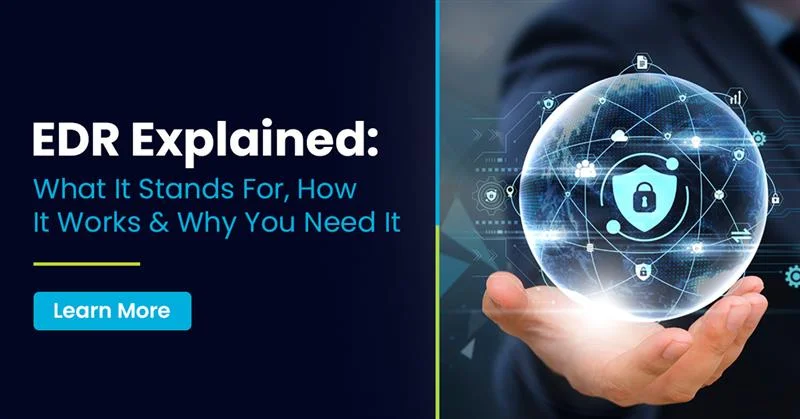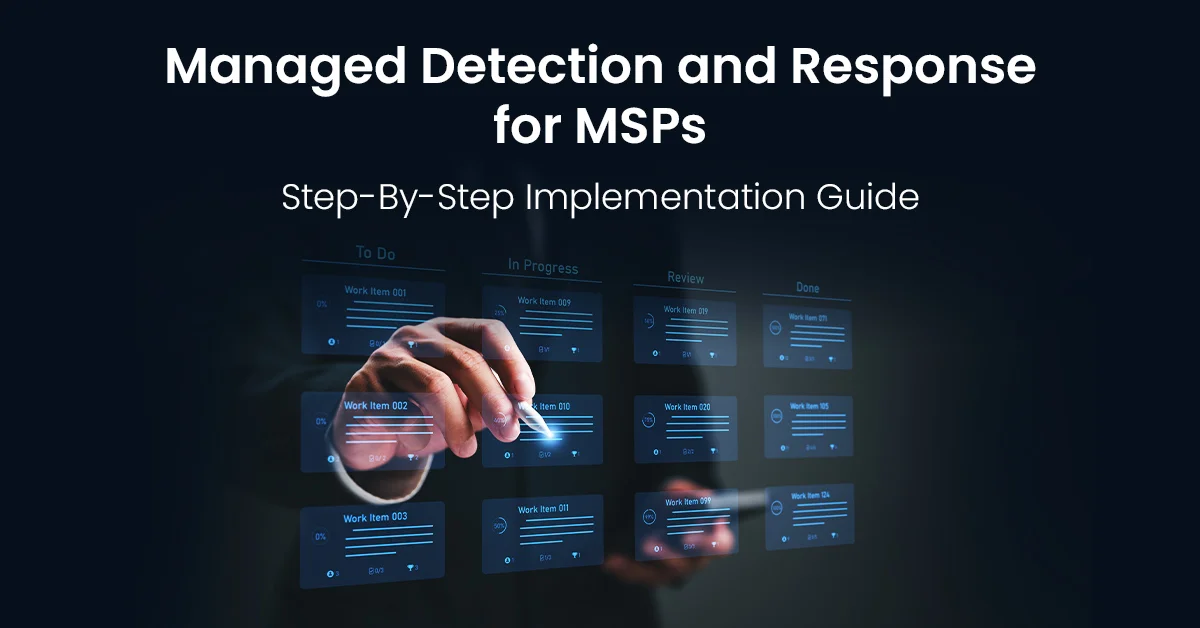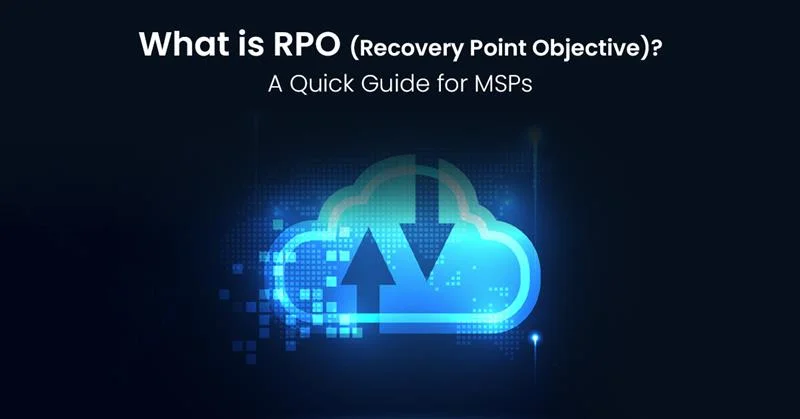Understanding what EDR is has become crucial as cyberattacks grow more sophisticated every day. Traditional security measures simply can’t keep up with modern threats that bypass firewalls and evade detection for months. If you’ve ever wondered what EDR is and why it’s becoming the backbone of modern cybersecurity, you’re about to get your answers.
EDR solutions aren’t just another security buzzword – they’re the frontline defense that organizations desperately need in today’s threat landscape. Let’s break down everything you need to know about these powerful security tools.
What is EDR and what does EDR stand for?
The way we handle endpoint security has fundamentally changed because of EDR technologies. But before diving into the technical details, let’s answer the basic question that brings most people here.
Understanding EDR security fundamentals
So, what does EDR stand for? EDR stands for endpoint detection and response – a cybersecurity solution designed to continuously monitor, detect, and respond to threats on endpoints like computers, smartphones, and servers.
Here’s what makes EDR security different from traditional approaches:
- Continuous monitoring: EDR solutions keep an eye on endpoints around-the-clock, in contrast to antivirus software that scans occasionally
- Behavioral analysis: EDR systems track normal behavior patterns and flag anomalies that could indicate threats
- Real-time response: when threats are detected, EDR solutions can automatically isolate affected systems
- Forensic capabilities: these tools maintain detailed logs for post-incident analysis and investigation
To understand what EDR is, think of it as having a security guard who never sleeps, watches everything, remembers every detail, and can instantly react to suspicious activity.
Why EDR systems are important in the current threat environment
The statistics tell a sobering story about modern cybersecurity challenges. According to IBM’s most recent analysis, the average cost of a data breach worldwide in 2024 will be $4.88 million, a 10% rise from the previous year. Even more concerning, security teams take an average of 277 days to identify and contain a data breach.
However, there’s good news. Organizations using advanced EDR security solutions are seeing dramatic improvements. Dwell time in 2024 decreased 46% to 7 days from 13 days in 2023, showing that proper EDR implementation significantly reduces the time attackers can remain undetected in your environment.
The EDR market reflects this growing recognition of importance. Its market size reached USD 3.7 billion in 2024 and is expected to reach USD 16.0 billion by 2033 at a CAGR of 17.6%, demonstrating massive investment in these critical security technologies.
How do EDR solutions work?
EDR systems operate on a fundamentally different principle than traditional security tools. Instead of relying on signature-based detection, they focus on behavior and context.
The technology behind EDR tools
Modern EDR tools work through several interconnected processes:
Data collection and monitoring
- EDR systems deploy lightweight agents on every endpoint
- These agents continuously collect data about processes, network connections, file changes, and user activities
- Information flows to centralized management consoles for analysis
Threat detection and analysis
- Real-time analysis of gathered data is done by machine learning algorithms.
- Using behavioral baselines makes it easier to spot variations that could be signs of danger.
- Integration with threat intelligence feeds provides context about known attack patterns
- Advanced EDR systems utilize AI to detect zero-day attacks and unknown threats.
Response and remediation
- Automated responses can isolate infected endpoints instantly
- Security teams receive detailed alerts with context and recommended actions
- Forensic data helps understand attack progression and impact
What makes EDR systems different from traditional security
Traditional security solutions ask: “is this file bad?” EDR security asks: “is this behavior suspicious?” This fundamental difference changes everything.
Key distinctions include:
- Proactive vs. Reactive: EDR tools hunt for threats instead of waiting for alerts
- Context awareness: understanding what EDR is means recognizing its ability to correlate events across time and systems
- Forensic capabilities: detailed logging enables thorough investigation of incidents
- Automatic response: Prompt containment reduces the harm caused by successful assaults
Key components of modern EDR solutions
Effective EDR systems integrate several critical components:
Endpoint sensors and agents
- Lightweight software installed on every protected device
- Continuous data collection with minimal performance impact
- Real-time communication with central management platforms
Central management consoles
- Unified dashboards for monitoring all endpoints
- Alert prioritization and investigation workflows
- Policy management and configuration control
Threat hunting capabilities
- Proactive searching for hidden threats
- Historical data analysis to uncover dormant attacks
- Integration with external threat intelligence sources
Why your organization needs EDR security
The question isn’t whether you need EDR solutions – it’s whether you can afford to operate without them. The modern threat landscape has fundamentally changed, and traditional security approaches are proving inadequate.
Critical benefits of implementing EDR tools
Organizations implementing comprehensive EDR security report significant improvements across multiple metrics:
Faster threat detection
- Traditional methods take months to identify breaches
- EDR solutions can detect threats in minutes or hours
- Early detection dramatically reduces potential damage
Reduced response time
- Automated containment limits threat spread
- Security teams get actionable intelligence instead of generic alerts
- Streamlined workflows accelerate investigation and remediation
Enhanced visibility
- Complete endpoint activity monitoring
- Historical data for forensic investigation
- Better understanding of attack patterns and tactics
Compliance support
- Detailed logging meets regulatory requirements
- Incident response capabilities support compliance frameworks
- Audit trails provide necessary documentation
What happens without proper EDR solutions
Organizations without adequate EDR security face significant risks that extend far beyond immediate financial losses:
Extended dwell time
- Attackers go months without detection in the absence of EDR tools
- The global attacker median dwell time continued trending downwards in 2023, and is now 10 days, but this improvement largely reflects organizations using advanced detection tools
Increased breach costs
- Late detection leads to more extensive damage
- Remediation becomes more complex and expensive
- Reputation damage can have lasting business impact
Limited incident response
- Without forensic data, understanding attack scope becomes nearly impossible
- Recovery efforts lack direction and may miss compromised systems
- Legal and regulatory consequences become more severe
Who should consider EDR systems?
Understanding what EDR is helps determine whether your organization needs these advanced security capabilities. The answer depends on several factors, but the trend is clear: most organizations benefit from EDR implementation.
Organizations that benefit most from EDR security
Enterprise environments
- Big businesses with thousands or hundreds of endpoints
- Complex IT infrastructures with diverse operating systems
- Distributed workforces requiring comprehensive endpoint protection
Remote workforce considerations
- Businesses that use a lot of remote or mixed work arrangement
- Companies managing BYOD (bring your own device) policies
- Businesses requiring secure access to sensitive data from multiple locations
High-compliance industries
- Healthcare organizations managing patient data
- Financial institutions handling sensitive customer information
- Government agencies with strict security requirements
When to upgrade from basic antivirus to EDR tools
Several warning signs indicate it’s time to implement comprehensive EDR solutions:
Security incidents increase
- Multiple malware infections despite existing security
- Suspicious network activity that current tools miss
- Security warnings that don’t give enough background information for an inquiry
Business growth and complexity
- Expanding remote workforce
- Increasing number of endpoints to protect
- Growing regulatory compliance requirements
- Integration of cloud services and SaaS applications
Resource limitations
- Security team overwhelmed by alert volume
- Lack of visibility into endpoint activities
- Difficulty investigating and responding to incidents
How to choose the right EDR solutions
Selecting appropriate EDR tools requires careful evaluation of your organization’s specific needs, technical requirements, and available resources. The best EDR system relies on several criteria, and not all EDR systems are made equal.
What to look for in EDR tools
Essential features checklist
- Real-time monitoring and behavioral analysis capabilities
- Automated threat response and containment features
- Comprehensive logging and forensic investigation tools
- Integration with existing security infrastructure
- Scalable architecture that grows with your organization
Performance and usability
- Minimal impact on endpoint performance
- Intuitive management interface for security teams
- Clear alerting with actionable intelligence
- Customizable policies and response workflows
Vendor considerations
- Proven track record in cybersecurity
- Regular threat intelligence updates
- Responsive customer support and professional services
- Clear roadmap for future development
Common mistakes when evaluating EDR systems
Focusing only on detection
- Many organizations evaluate EDR security based solely on detection capabilities
- response features are equally important for comprehensive protection
- The most effective EDR systems include automatic tools for containment and remediation.
- These features limit damage when threats are discovered
Ignoring integration requirements
- EDR tools must work seamlessly with existing security infrastructure
- Solutions that don’t integrate well with SIEM systems create operational challenges
- Poor integration with firewalls and other security tools reduces overall effectiveness
- Compatibility should be a primary evaluation criterion
Underestimating training needs
- Implementing EDR solutions requires significant training and process changes
- Organizations frequently underestimate the amount of time and resources needed for deployment.
- Sophisticated tools need properly trained teams for maximum effectiveness
- Factor in training costs and timeline when planning implementation
Overlooking total cost of ownership
- Expenses for first licensing are only the start of an EDR investment.
- Continuous costs for professional services, management, and training mount up.
- These costs can significantly impact long-term budget planning
- Factor in all costs when comparing different EDR options
Market trends reflect growing EDR adoption across all organization sizes. SMEs represent the fastest-growing segment, with projected 27% CAGR from 2024 to 2029, demonstrating widespread recognition of advanced endpoint security needs.
Conclusion: Secure your endpoints with IT By Design SOC services
Understanding what EDR is and implementing the right EDR solutions is crucial, but managing these complex EDR systems requires specialized expertise and around-the-clock attention. The challenges we’ve discussed – from threat detection to incident response – can overwhelm internal teams without proper support.
SOC services offered by IT By Design (security operations center) services provide the perfect solution for organizations seeking comprehensive EDR security without operational complexity. Our expert team monitors, manages, and optimizes your EDR tools 24/7, ensuring maximum protection while you focus on business growth.
Our comprehensive SOC services include:
- Professional EDR deployment: expert installation and configuration of leading EDR systems
- 24/7 monitoring and analysis: continuous threat hunting and real-time response capabilities
- Incident response services: immediate containment and remediation when threats are detected
- Ongoing optimization: regular tuning and updates to maximize EDR effectiveness
- Complete security infrastructure management: Integrating with current security procedures and tools to control the whole security infrastructure
Don’t let sophisticated threats compromise your business when expert help is available. Organizations with proper EDR implementation and professional management significantly reduce risk exposure and improve security posture.
Ready to transform your cybersecurity defenses? Contact IT By Design today to learn how our SOC services can enhance your EDR implementation and provide enterprise-grade protection your organization deserves.
FAQs (Frequently asked questions)
Q1: What does EDR stand for?
A: EDR stands for endpoint detection and response, a cybersecurity solution that monitors and responds to endpoint threats.
Q2: How is EDR different from antivirus?
A: Antivirus uses signature-based detection for known threats, while EDR provides behavioral monitoring to detect unknown threats.
Q3: What is the difference between EDR and XDR?
A: While EDR offers behavioral monitoring to identify unknown risks, antivirus software use signature-based detection for known threats.
Q3: How do EDR and XDR differ from one another?
A: EDR pricing ranges from $3 to $15 per endpoint monthly, depending on features and vendor.
Q5: Can small businesses use EDR?
A: Yes, many vendors offer EDR solutions designed specifically for small businesses with simplified management.
Q6: Does EDR replace antivirus?
A: EDR includes antivirus capabilities but offers more comprehensive protection, making standalone antivirus less necessary.








